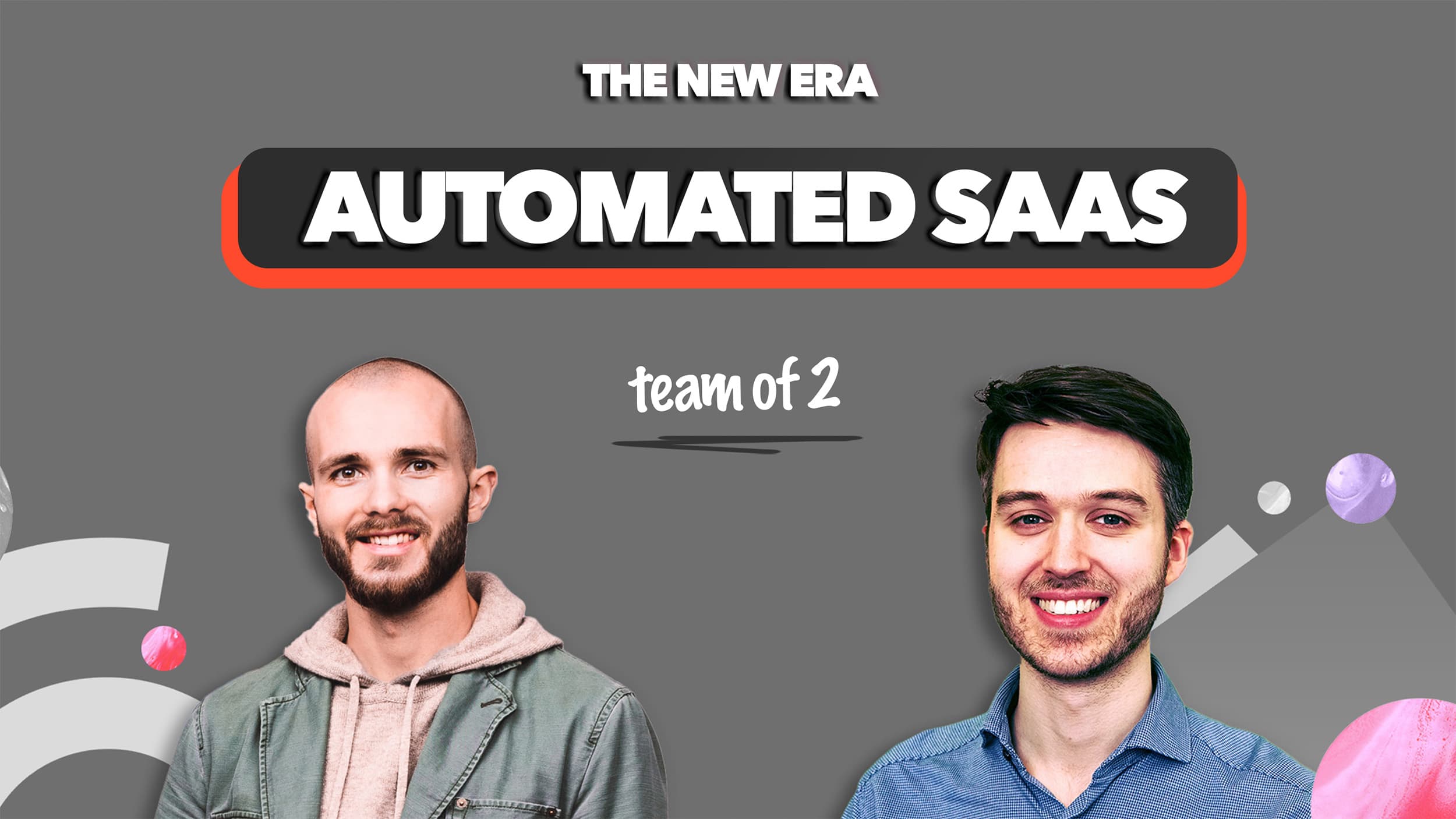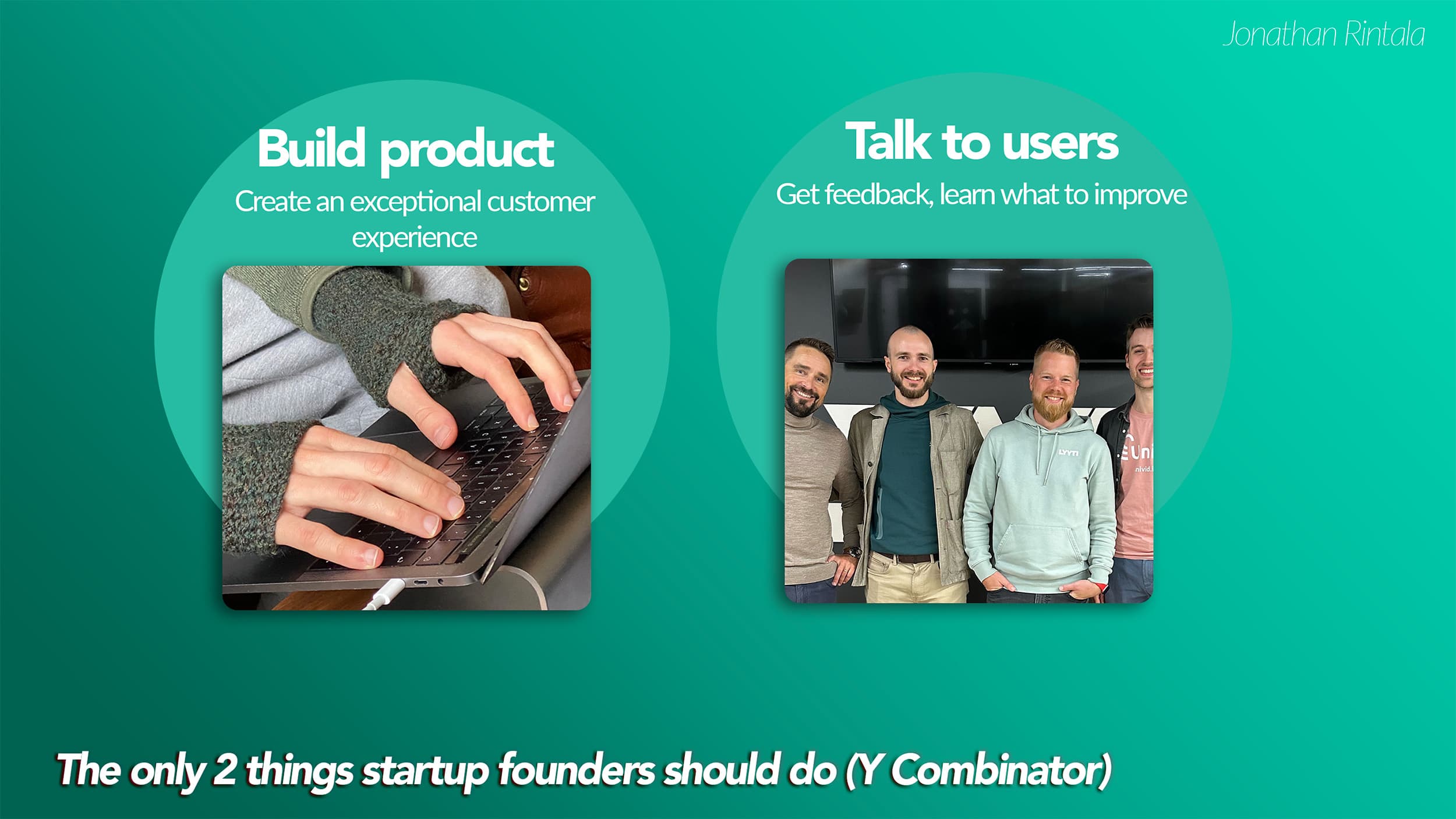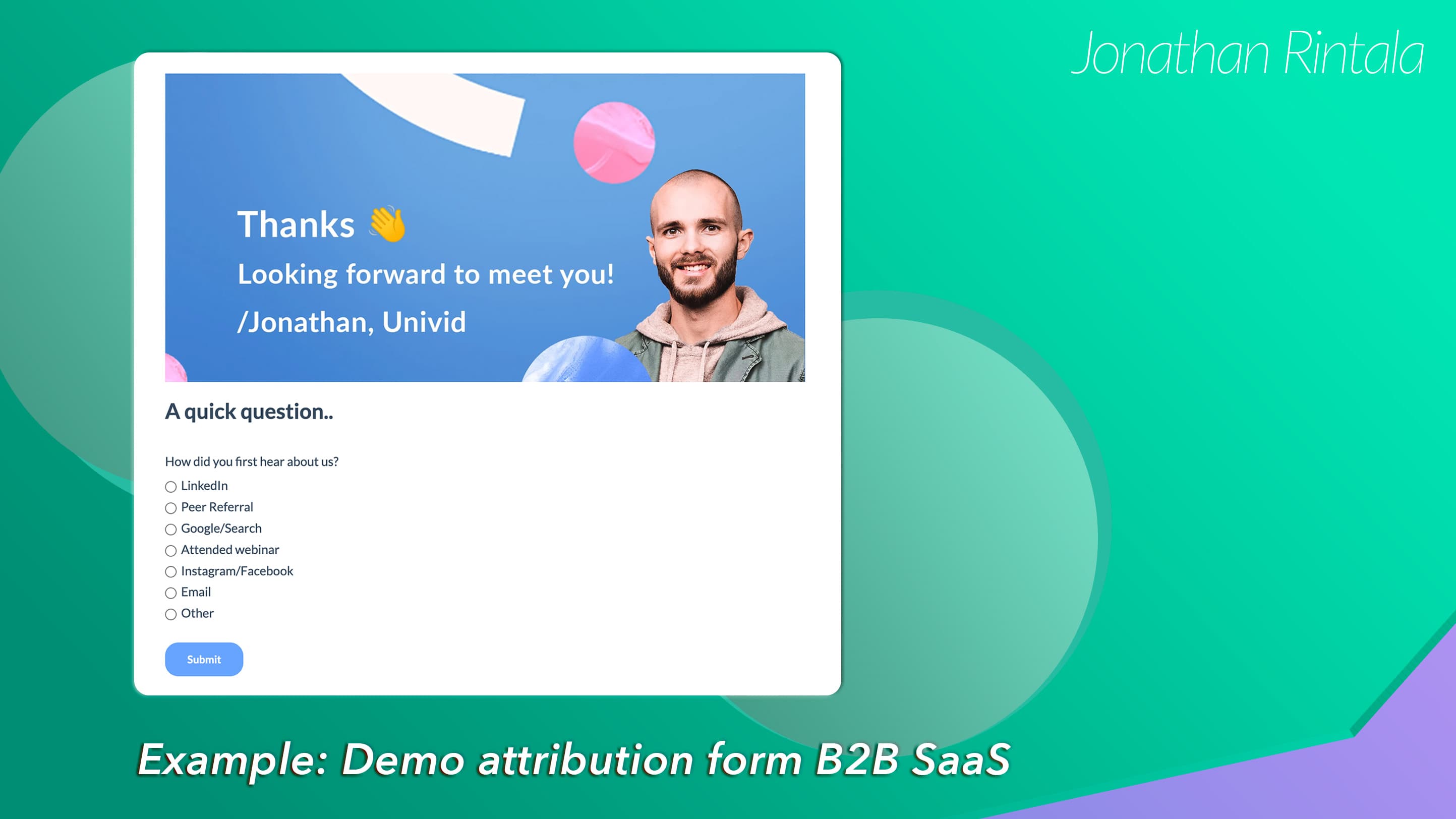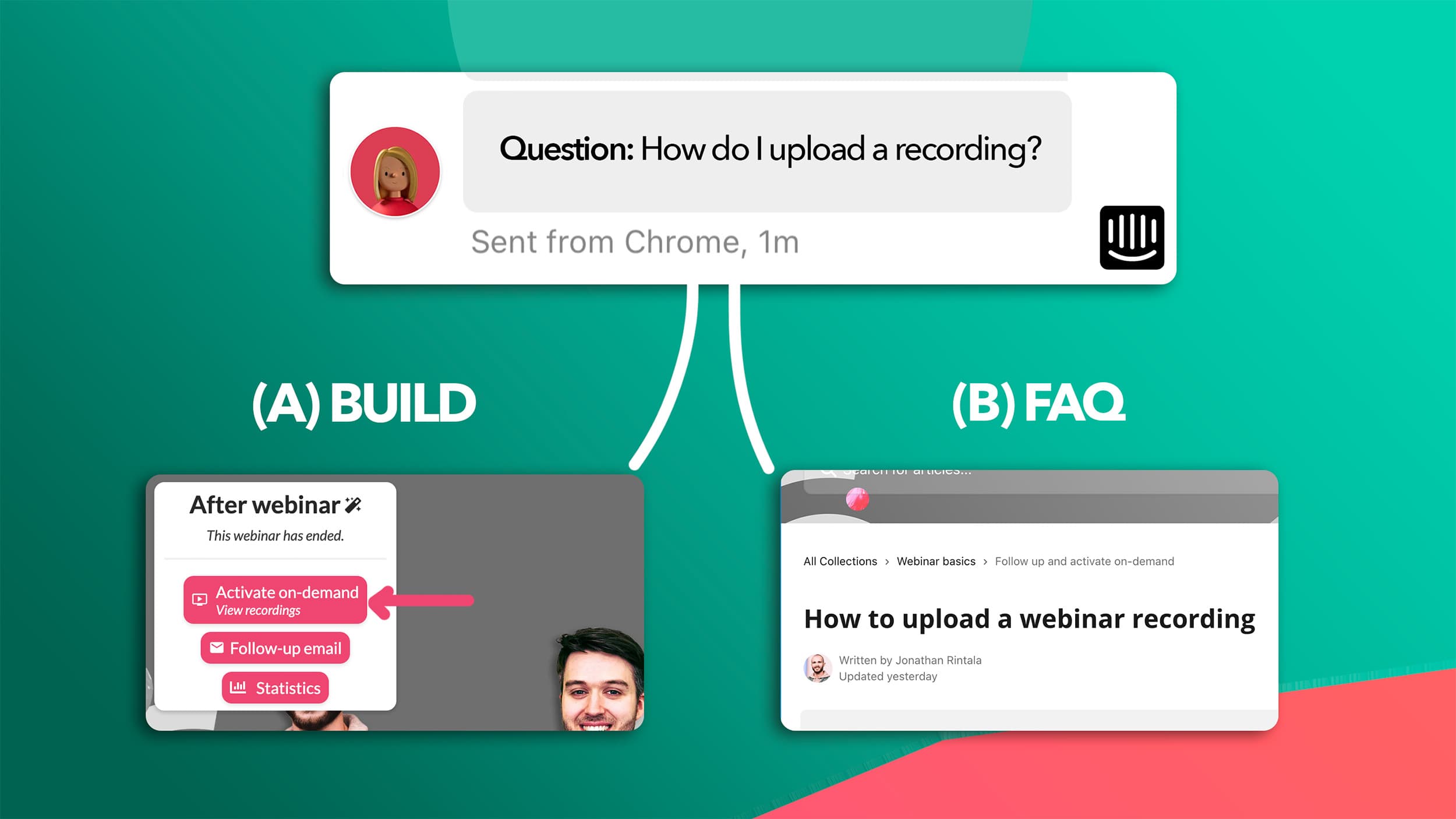The automated SaaS: How we run a lean SaaS using AI (team of 2)

Contents
The tables have turned. The new era of AI and automation is here. A time where you can scale big companies without scaling your team and adding FTEs.
The automated SaaS playbook: 5 rules to live by
This is the automated SaaS playbook. With the 5 rules we live by to automate to run and scale a lean SaaS, with a team of two. Largely using AI.
1. If you do something twice, automate ✅
Time is our most valuable asset. Thus, we are obsessed with how we spend our time and automating everything.
If you don't - you have created an agency where you (1) get paid for the time you spend (2) do not scale without adding more FTE:s, and you (3) will forever be stuck doing work which does not scale.
Maximize time for deep work
We automate everything internally to be able to spend our time doing deep work and focusing on building long-term strategy value ie. (A) talking to users and (B) building product.

This also involved cancelling all recurring meetings.
AI has helped in building out internal tools and go from problem -> automation quickly.
Examples of internal tools to automate
Examples of internal SaaS automation tools we built involve automatically generating:
Product visuals - to show our SaaS in action for customers in emails, offers, etc.
Offers - generate custom offers with branding, and customer specifics added
Agreements - based on HubSpot data we can automatically generate our agreements for e-sign
Annual usage reports for customers -> this will be put in the platform soon for the customers to access themselves.
Status of demos and deals - with AI summaries automatically being logged in HS, and updates pushed to Slack so we make our pipeline visible and keep feedback shared throughout our (tiny) org.
Scheduling of demos - HubSpot calendar link, connected to a form where prospect can automatically attribute themselves, reminders and pre-demo questions.

We are also power users of Slack and CRM automation in HubSpot. And run automated onboarding emails, which we connect to different triggers in our SaaS.
2. Set an internal hourly rate ✅
Time is our most valuable asset. Thus, we set our hourly rate internally to $2K/hour.
This allows us to make tradeoffs between short vs. long term activities. Making sure we never spend time on things that don't move the business forward in the long term and scales.
Talking to users is free
Obviously we still do things that don't scale when it comes to talking to customers, serving them, or getting feedback. That's something we put an internal $0/hour price tag on. And consider worth the time as long as humanly possible.
Unless it's repetitive and does not add new value - then we will automate those parts immediately.
As engineers we are happy to build internal tools, automations, etc. were needed to scale - without adding FTE:s and instead - free up our time to focus on what matters.
3. Document like you mean it ✅
We obsess about automation - ie. building automatic processes where needed. But that also means documenting everything - both customer feedback and how to do things.
We keep internal docs in Notion. And also keep clean HubSpot folder structure for email template, snippets, etc. Which we use for all the recurring pre demo question, post demo follow-ups, onboarding emails, etc.
4. Never get the same question twice ✅
We do not allow ourselves to get the same question from customers twice.
If a customer asks about something in the platform, or related to information about the product - we either:
(A) Build it into the product or improve existing UI - with the aim to never have to answer that question manually again.
(B) If not (A) is possible -> we build information around it in our help center or expose it as part of marketing material to new customers.

5. Help customers help themselves ✅
The next best thing to customers not having questions at all - is them being able to help themselves and their peers.
Thus, we built out a world-class help center where customers can get all their answers - and more.
Revolutionizing?! Not so much, but actually putting effort into it - yes!

Instead of letting this be the bottom priority, with ugly screenshots, walls of text, and no visual or interactive material we done a few things to make our help center great.
For example, we:
(a) write it from own experience - referencing free tools and include tips like 'what time/days are best to host webinars' that will genuinely help out customers suceced - not just solve their minimum needs
(2) update it daily with new learnings and questions from customers
(3) make it fun through videos + interactive GIF:s.

Also, we let our own AI and support chat tool train on this to be able to auto respond with references to the right things in our help center. Meaning customers can get exactly what they need at the right time, without having to search on their own and look for a needle in a haystack.
Conclusion
Building and scaling a lean B2B SaaS is today easier than ever. With the help of AI and obsessing about automation, we have been able to free up time to deep work. And build a big SaaS being a team of 2.
We live by these 5 rules of the automated sales playbook. And you can too.
Want to learn more about growing SaaS companies?

